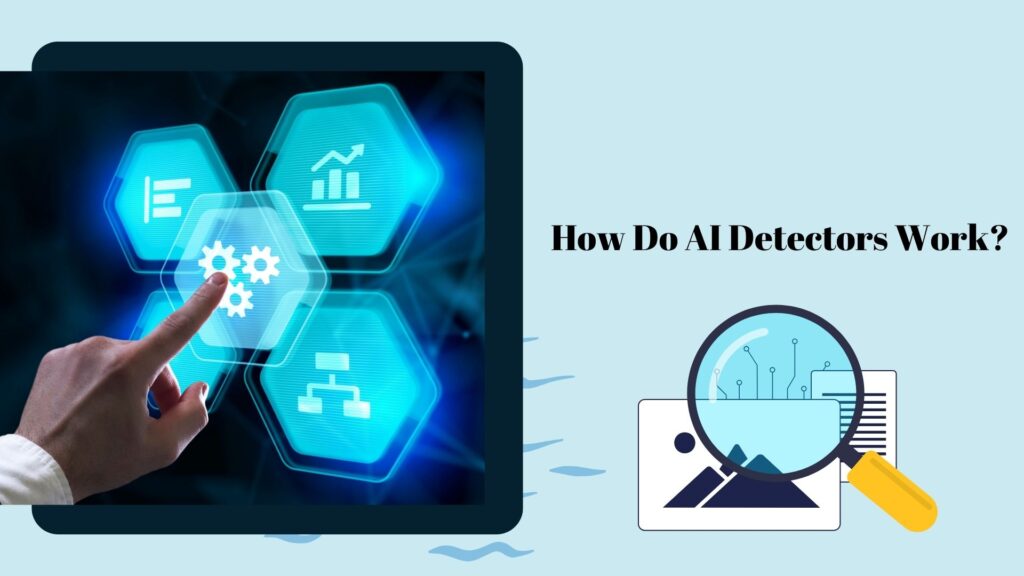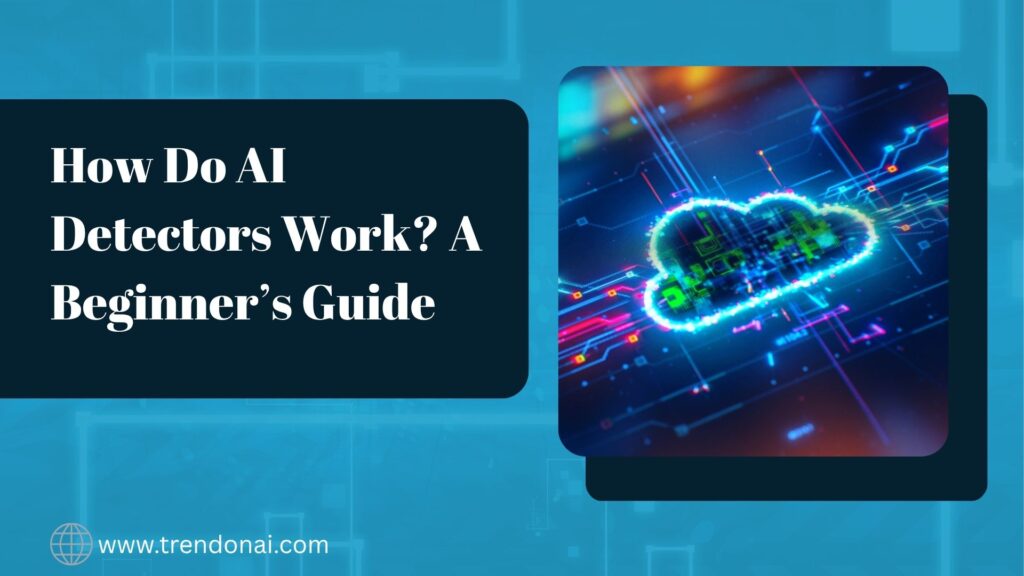In today’s digital era, Artificial Intelligence (AI) is no longer just a futuristic concept—it’s part of everyday life. From writing essays and generating stories to composing music and simulating human-like conversations, AI tools are blurring the line between what is human-made and what is machine-generated. This has given rise to an important question: how do we tell the difference? The answer lies in AI detectors, tools specifically designed to identify whether a piece of content was crafted by a person or created with the help of AI.
The purpose of these detectors is simple, but their role is becoming increasingly vital. Teachers may use them to check if students are submitting original work or relying on AI-generated homework. Universities turn to them to safeguard academic integrity and prevent plagiarism. Businesses also employ them to verify the authenticity of content, while individuals use them out of curiosity to see if a piece of text “feels” more human or machine-like.
So, how do AI detectors actually work? At their core, these tools analyze patterns in writing. AI-generated text often has certain characteristics—such as overly consistent sentence structures, a lack of nuanced errors, or a repetitive style—that human writing doesn’t usually display. Detectors use advanced algorithms and machine learning models to scan for these patterns, assigning probabilities on whether the text is AI-produced. Some even compare the style of writing against massive datasets of both human and AI-created content to improve accuracy.
However, AI detectors are not perfect. As AI models grow more advanced, their outputs become increasingly indistinguishable from human writing, which makes detection a constant challenge. False positives and false negatives can occur, meaning a human-written essay might sometimes be flagged as AI and vice versa.
In this guide, we’ll explore not only how AI detectors work but also their limitations, practical applications, and the ethical questions they raise in education, business, and beyond. By the end, you’ll have a clear understanding of why these tools matter and how they fit into our AI-driven world.
What Is an AI Detector?
The AI detector is a scanning program addressing a piece of text and inferring whether it was printed or created by an AI language model (such as ChatGPT, the GPT-3, or the GPT-4) or written by an actual human being.
It can be viewed as a lie detector, however, this time around, the claim is that it seeks out machine-generated material rather than fibs and lies.
However, how does it in fact “detect” AI-generated writing?
The way AI detectors operate is by analyzing the writing trends, such as the frequency of words used, the level of sentence structure and repetition, and how predictable the content itself is.
For example:
A human being could communicate through emotions, sarcasm or at random. An AI, however, tends to write with balanced, grammatically perfect and predictable manner.
Such tools involve comparison of the text provided to the already known samples of scripts written by a human and AI. When the document follows typical characteristics of AI, the software will mark it as probable AI text.
Here’s what a typical AI detector tool looks for:
- Consistency in sentence length and tone
- Repetitive phrases or structure
- Lack of personal experiences or emotions
- Overuse of formal or generic language
The ability to check an essay, blog post, email, or assignment is the same with AI detectors trying to point out whether it was done by a machine or not, still being able to sound natural.
Certain AI detectors also include a percentage score-such as 90% AI or 10% Human to enable you to make a judgment of the content with ease.
These tools are now widely used by:
- Teachers and schools (to catch AI in homework)
- Bloggers and marketers (to ensure originality)
- Employers (to test real writing ability)
- Readers (to spot fake or low-effort content online)
So in short, AI detectors act as digital gatekeepers that help maintain transparency and trust in written communication.
Why Are AI Detectors Important?
- Academic honesty: Used by teachers and universities to check student assignments.
- Content originality: Employed by bloggers, journalists, and marketers.
- Online trust: Helps platforms fight misinformation and fake content.
Popular AI detectors include:
- Turnitin’s AI Detection Tool
- Originality.ai
- ZeroGPT
- Copyleaks AI Detector
- GPTZero
How Do AI Detectors Work?

To set our minds on the right direction, let us dive into the real question How do AI detectors work? The answer is short: through a study of patterns of language that can be more prevalent when generated by AI than when written by humans.
In the simplest terms, the process can be determined as follows:
1. Text Analysis
The AI detectors scan the text in input:
• “Perplexity:” How shocking or aleatory it is. Text AI is usually predictable.
• Burstiness: Variability of the sentence flow and sentence length. Human beings by Britains very naturally are more diverse than AI.
To illustrate, in case all sentences are close to each other in length and form, it becomes a red flag for AI.
2. Language Modeling
AIs to guess probability of a text to be AI-generated will employ their own language models.
They basically say: How many would I be an AI to have written this?
Others apply reverse engineering: attempting to figure out how the AI might have generated the text.
3. Stylometric Analysis
Other tools analyze writing style and compares it to known human written and AI written material. They look:
• Repeating wordings
• Ascence risks The narrator fails to provide anecdotes about himself. • Excessive use of transitions such as in conclusion, however and so on.
Real-Life Example: AI Detectors in Schools
Case Study: University of California
Following the success of ChatGPT among students, the University of California started employing the AI detectors like Turnitin to go through essays and reports. They discovered that about one out of every 10 submissions were likely to accurately represent the AI and led to reviews and even more stringent rules.
Educators With AI Signals Nowadays, teachers around the world have access to AI detectors, which identify any kind of suspicious assignments. Some go even further to use some tools with human review to have a higher accuracy.
Limitations of AI Detectors
Although very effective, AI detector tools are not flawless. These are some general obstacles:
1. False Positives
The content that is created by humans might mistakenly be considered to be AI written text- it might even be pronounced such, if it is too formal or rigid.
2. The case of Evolving AI Models
Detection is more difficult as AI models grow to become more human-like. Novel Process The wide-spread of new models such as GPT-4 plus specialized humanizer tools, make it hard to keep pace using detectors.
3. Language Limitations
Some free AI detector tools don’t perform well with:
- Non-English texts (like Hindi)
- Creative writing
- Short paragraphs
Best AI Detectors in 2025
Here are some of the best AI detector tools available today (free and paid):
| Tool Name | Key Features | Free Option? |
| GPTZero | Focused on education, high accuracy | Yes |
| ZeroGPT | Works with multiple languages | Yes |
| Originality.ai | Designed for SEO, content creators | No |
| Turnitin AI | Used by schools and universities | Limited |
| Copyleaks | Offers AI + plagiarism detection | Yes |
How Do AI Detectors Work for Essays?
When detecting AI-generated essays, these tools look for:
- Lack of critical thinking
- Too-perfect grammar
- Overuse of clichés
- Absence of personal voice
One of the essays of the student is:
One of the reasons why technology is good to the society is that it improves the productivity and communication. …may appear refined, though when it is superficial or single-dimensional, detectors smell a rat.
Free AI Detectors: Are They Reliable?
Finding the free online AI detector is easy, but the accuracy differs.
Pros:
• Accessible easily
• Is good in spot checks
No sign-up is necessary
Cons:
Not as precise as the paid applications
• Not suitable to long-form content • They may only provide erratic outcomes
How to Beat AI Detectors
To make it clear, the attempts to tickle AI detectors with the help of the so-called AI humanizer tools or editing hacks could be effective in a short-term perspective as well, however, it is unethical. Employers and universities are also smarting up to this rapidly.
Still, some use techniques like:
- Paraphrasing
- Adding typos
- Injecting human anecdotes
However, take caution: A great number of tools are now becoming perhaps, AI methods that are not possible to notice.
Tips to Write AI-Free, Human-Like Content
To ensure you do not get flagged, remember to do the following:
• Put examples and the real experience to use
•Use variation in structure of sentences naturally
• Apply humor, emotion and opinion • Be non mechanical and monotonous
Conclusion: The Future of AI and Detection
AI is here and so is the tools that keep it in considerations. No matter whether you write an essay, grade one, or publish any kind of content at your blog, it is important to be aware of the functions of AI detectors and be wise in their use.
The detection tools will be developed as AI does. However, the most fundamental of all is human ingenuity that does not have an adequate substitute on machines-yet
Wish to make sure that your content is not AI-generated? Take a free AI detection tool today and be on top of the AI game. And when you thought this guide useful, pass it along to your friends or your students, since the only defense is to stay informed.
FAQs: How Do AI Detectors Work?
1. Can AI detectors always tell if content is AI-generated?
No, they are not precise hundred percent. False positives or negatives can be the case, especially with a more advanced model, such as GPT-4 or modified text.
2. Are there any free AI detectors available?
Yes, such tools as ZeroGPT or GPTZero, Copyleaks, among others, provide Free alternatives of the basic application of AI detector.
3. How do AI detectors work for essays specifically?
They examine the following patterns; the absence of emotion, superficial logic, and a consistent sentence structure, which are indicators of AI-created essays.
4. Can I make AI content undetectable?
Others apply to the tools called AI detector and humanizer but it is not low-keyed. The combination of the AI aids and human imaginations is more convenient.
5. Are AI detectors used by universities?
Indeed, a great number of universities utilize the presence of AI detectors like Turnitin to ensure academic integrity and detect the possibility of cheating using AI devices.
Read Related : AI Stocks
Read AI Related Information: https://www.akashspeak.com/

